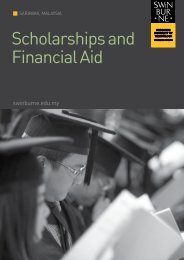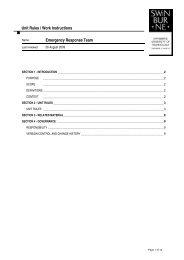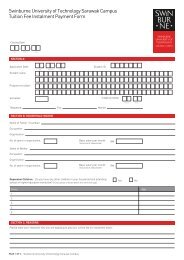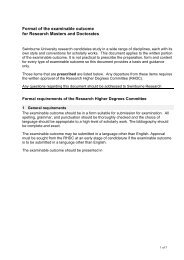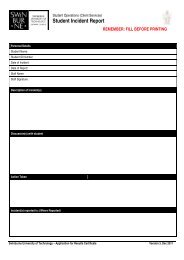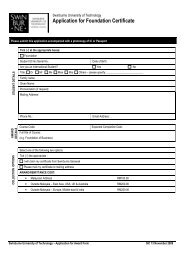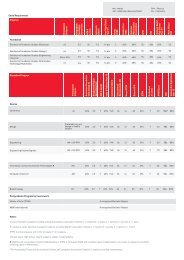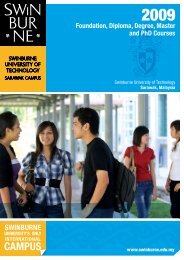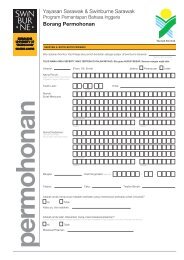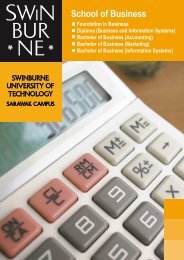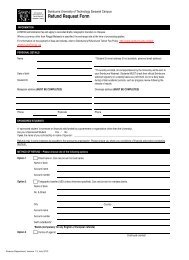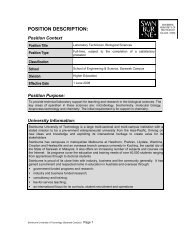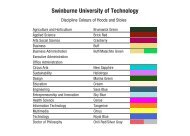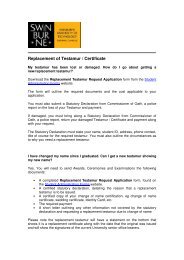Plagiarism Guide - Swinburne University of Technology
Plagiarism Guide - Swinburne University of Technology
Plagiarism Guide - Swinburne University of Technology
- No tags were found...
You also want an ePaper? Increase the reach of your titles
YUMPU automatically turns print PDFs into web optimized ePapers that Google loves.
1.2 What does plagiarism look like?The specific practices and behaviours that are considered to constitute plagiarism in theopinion <strong>of</strong> each Subject Convenor at <strong>Swinburne</strong> are generally identified in the Subject Outlineyou receive at the beginning <strong>of</strong> each subject. Read these Outlines very carefully. Askquestions <strong>of</strong> the Subject Convenor if you are unsure about any matter, stated or unstated.There are three main types <strong>of</strong> plagiarism. These are explained below, with examples.<strong>Plagiarism</strong> Type 1: Individual assignment – using other students’ workThe first way in which students may plagiarise or cheat occurs when individualassignment submission requirements are the same for each student. It is plagiarismwhen students use the ideas, words or work <strong>of</strong> other students and submit thesein an assessment task as their own.For example, a student who hands in an individual assignment that was written in part orwholly by another (current or past) student; that is based on the work <strong>of</strong> another (currentor past) student; or that in any way uses the work <strong>of</strong> another (current or past) studenthas committed plagiarism.Example 1: Not <strong>Plagiarism</strong>You chat to another student about the assignment generally – you might discuss how youwill approach the task, what sorts <strong>of</strong> material you might include, how you might go aboutputting it together. Then you both go <strong>of</strong>f and write your assignments separately withoutconsulting each other again.Example 1: <strong>Plagiarism</strong>When the assignment each student is required to submit is the same, you look at anotherstudent’s draft or finished assignment to get ideas about the format and/or content.You use the same resources, quotes, paraphrases, summaries, notes, ideas and/orarrangement <strong>of</strong> material as this other student in your own assignment.ORYou ask (or pay) a ‘tutor’, friend, or some other person to write the assignment for youor help you to the extent that the work is not really your own, but is both your and yourhelper’s work, but you hand this in as your own.ORYou accept or buy an already completed assignment from a student (past or current) or fromthe Internet or some other source, put your name on it, and hand it in as your own work.A guide for students at <strong>Swinburne</strong> <strong>University</strong> <strong>of</strong> <strong>Technology</strong> ■ 7



